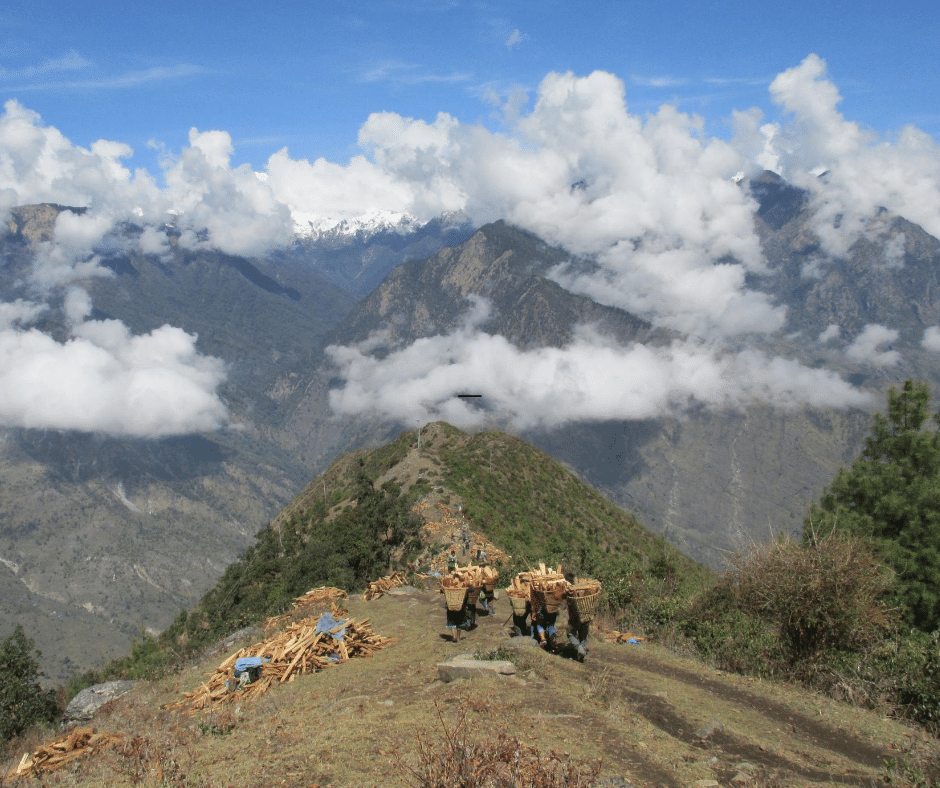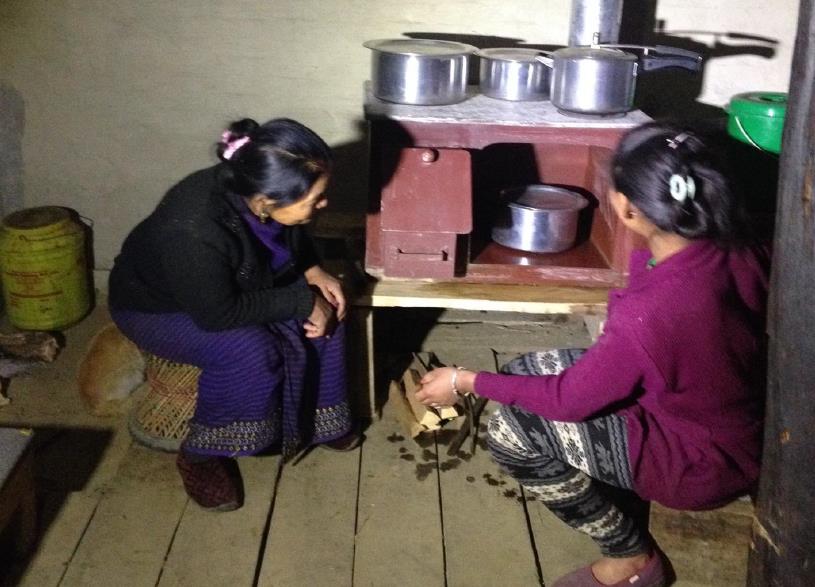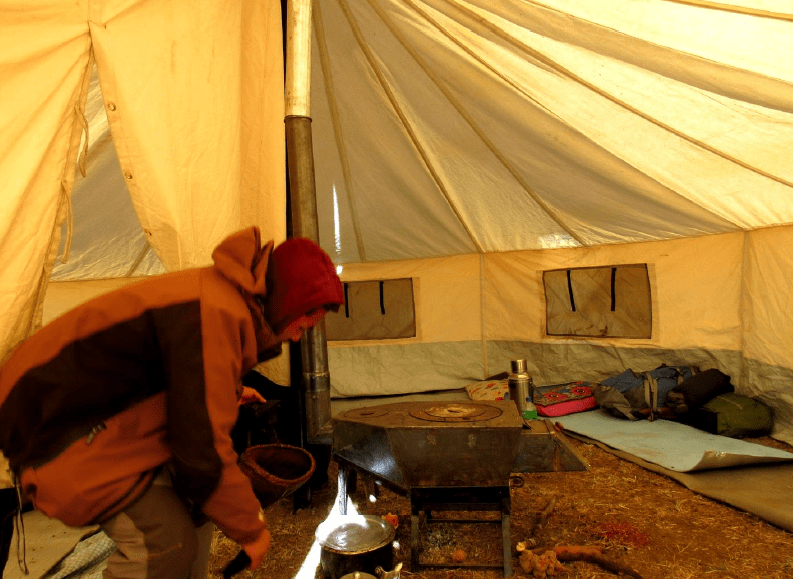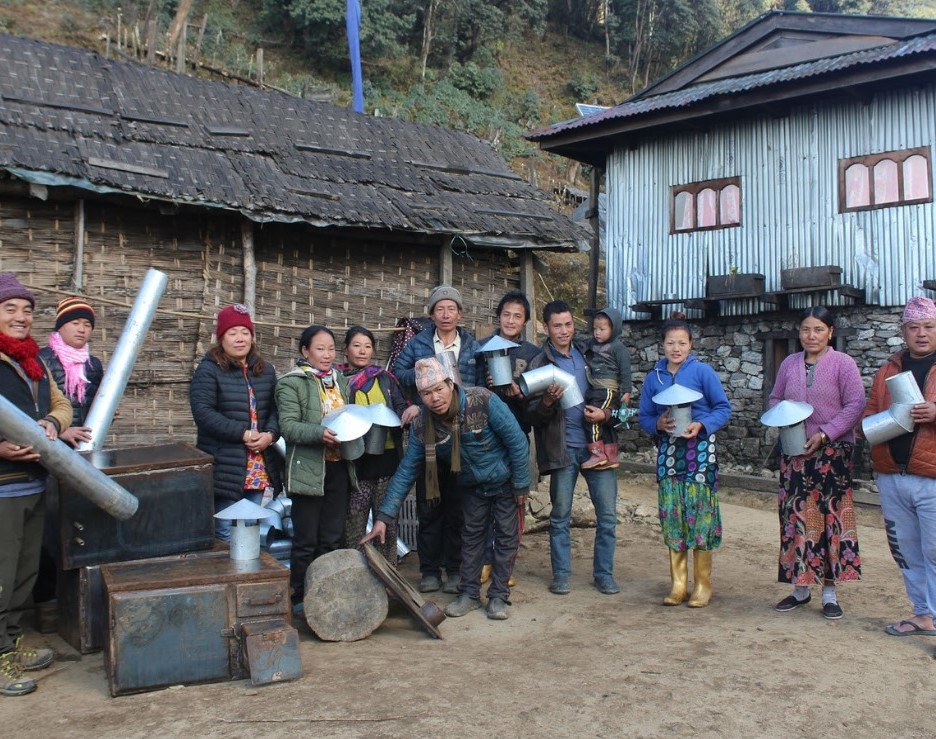Help the People Who Help Red Pandas

RPN is on a mission to improve the health and livelihoods of local families while protecting the home of this endangered species.
On the surface, buying household appliances and donating to red panda conservation have nothing to do with one another.
But as a Red Panda Network (RPN) Panda Guardian, your monthly donation to our Stoves for Stewards campaign helps the people who help the pandas.
Since 2017, RPN has been on a mission to provide improved cooking stoves (ICS) to communities within the red panda range. The metal ICS not only are more fuel-efficient but also friendlier to the environment and human health than the mud-and-stone cookstoves traditionally used in these villages.
The collection of firewood to fuel the traditional stoves contributes to deforestation and habitat loss threatening red pandas. Burning that wood, in turn, adversely affects the health of the people using the stoves.
 Fuelwood harvest is a major cause of deforestation in Nepal. © Red Panda Network.
Fuelwood harvest is a major cause of deforestation in Nepal. © Red Panda Network.
According to WHO, each year nearly four million people die prematurely from illnesses linked to indoor air pollution caused by cooking with inefficient stoves and open fires. Chronic obstructive pulmonary disease (COPD), ischaemic heart disease and pneumonia combined cause more than 70 percent of those deaths.
RPN’s goal for this year is to furnish the homes of 85 of our Forest Guardians (FGs), as well as 110 homestay owners and other community members, with ICS. Each stove costs from US$350 to US$425, depending on size, but can be as much as US$500 due to fluctuations in the US dollar to Nepalese rupee exchange rate.
To date, we’ve distributed 135 ICS to the FGs, herders, homestay owners and other people living in the Panchthar-Ilam-Taplejung (PIT) Corridor of eastern Nepal. Just one of the stoves helps save 540 kilograms (about 1,190 pounds) of firewood per year, says RPN Program Coordinator Sonam Tashi Lama. That means the 135 ICS in the PIT Corridor help save nearly 73,000 kilograms (about 160,700 pounds) of firewood each year.
Up to 34 percent of wood harvested for fuel worldwide is unsustainable, and burning solid fuels, such as wood, for cooking and heating produces up to 58 percent of black carbon emissions, according to the Clean Cooking Alliance, a public-private partnership that promotes clean-cooking methods around the world.
By reducing wood consumption by about 50 percent, ICS help mitigate these effects. They also lessen the drudgery of food preparation, a task that in Nepal falls primarily upon women.
Thanks to the improved stoves’ fuel efficiency, women spend less time collecting firewood and less time cooking than when using traditional stoves, Lama says. Cleaning is easier, too. “The smoke (from traditional stoves) also heavily soils clothing, and makes the cooking pots and interior walls black, requiring valuable time and effort to scrub clean,” he says.
 Local women with ICS. ©RPN
Local women with ICS. ©RPN
Ngima Dawa Sherpa, a Forest Guardian, has seen several benefits: “The three main advantages of adopting ICS are massive reduction in interior smoke, which means no irritation on eyes; no black scar on cooking utensils, which means less work for women on cleaning; and one can install the ICS as per their height, which helps in reducing back pain that is caused by cooking.”
In the years since RPN began distributing the ICS, improvements have been made, such as the use of cast iron on the upper surfaces, Lama says. In addition, the stoves come in two sizes, one suitable for herders and one for families.
Lama says demand from the community is important for acceptance of the technology and its sustainability. “Nepal is unique for its large forest capacity relative to population,” he says. “The stewardship of forestland de facto lies in the hands of the closest village. Governance over the use of these community forest resources takes the form of rules and norms formulated by the village and enforced by them. Our FGs, when aware about the negative impacts of habitat loss and deforestation to red panda habitat and overall biodiversity, were more than happy to switch to ICS.”
 Herder cooking on improved metal stove in herder tent. ©RPN
Herder cooking on improved metal stove in herder tent. ©RPN
 ICS distribution to local people in eastern Nepal. ©RPN
ICS distribution to local people in eastern Nepal. ©RPN
Their adoption of the stoves has led to interest from other members of the community, such as tea house owners and hoteliers, Lama says. “We regularly receive demand for ICS via our partner organizations in the field during our community consultations.”
Lama is hopeful this interest will lead to further improvements in biodiversity and quality of life as RPN expands our campaign beyond FGs and educates the public on using ICS.
“We have a plan for regular monitoring of the efficient use of distributed ICS among the users because sometimes they lack proper use techniques of ICS, which may lead to overuse of firewood,” he says. “A local from each cluster of the community is being trained for installation and maintenance of ICS so that the person could monitor and provide support when needed locally.”
Dawn Peterson
Writing and Communications Volunteer
Red Panda Network
Learn more about our Stoves for Stewards campaign and how you can double your impact this month for the people who help red pandas!
